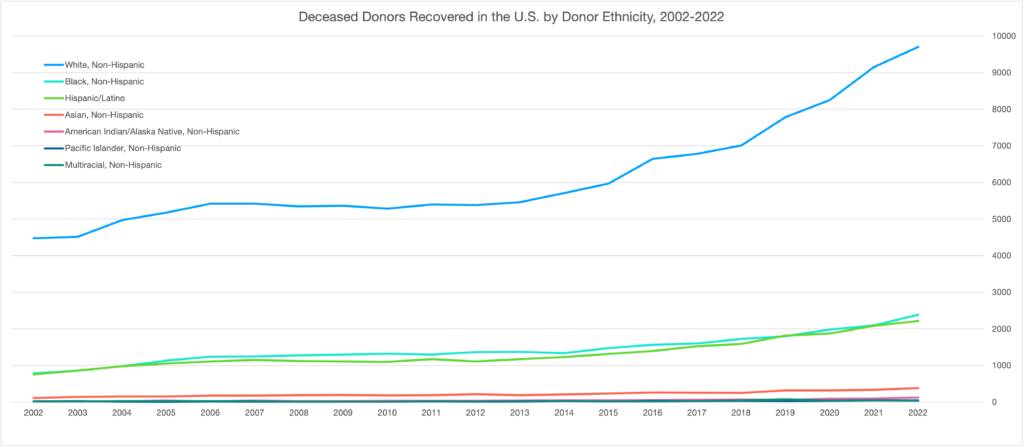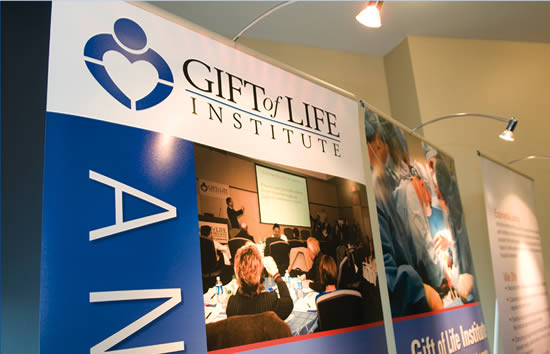Reaching Across Cultures: Interview with Dr. Heather Gardiner
Gift of Life Institute recently launched "Reaching Across Cultures," our newest eLearning course. The content was developed in partnership with Dr. Heather Marie Gardiner, who sat down with us to discuss how community engagement and education can reduce inequities in organ and tissue donation.
The Institute’s latest eLearning course – “Reaching Across Cultures” – equips learners with essential skills to navigate cultural nuances when it comes to organ and tissue donation among diverse populations. The content was developed in partnership with Dr. Heather Marie Gardiner, professor of social and behavioral sciences at Temple University’s College of Public Health. Gardiner recently joined Instructional Designer Shimrit Lee to discuss her research and the importance of education in fostering a more inclusive and effective donor community.
Shimrit Lee: Tell us about your research.
Heather Marie Gardiner: My work focuses on addressing health disparities, particularly in the realm of organ and tissue donation and transplantation. At the Health Disparities Research Lab, my team and I are dedicated to improving the organ donation process, reducing transplant inequities, and increasing access to transplantation services for marginalized communities.
SL: What kind of methods do you use to track disparities?
HMG: I employ a mixed-methods approach, drawing on both quantitative and qualitative methodologies. This includes developing and implementing protocols for in-depth interviews and focus groups and employing structured and semi-structured surveys. Additionally, I apply advanced statistical methods to analyze data and uncover patterns and disparities in health outcomes related to organ donation and transplantation.
One of the core aspects of my research is community engagement. At the Lab, we actively involve underserved minority populations in our research initiatives to ensure that our work directly addresses their needs and challenges. This community-centered approach not only informs our research design and implementation but also enhances the impact and relevance of our findings.
SL: What do you see as the most significant barrier to transplantation for marginalized communities?
HMG: First, I just want to emphasize that no population is a monolith. Plus, it’s nearly impossible to identify a single barrier to donation. Among African Americans, for example, disparities in donation are rooted in a complex interplay of historical mistrust of the medical system, concerns about fairness in organ allocation, and cultural and religious beliefs.
To overcome these barriers, targeted efforts are required to address misconceptions, improve education about the organ donation process, and rebuild trust within the healthcare system. Community engagement, culturally sensitive outreach, and collaboration with religious leaders can play pivotal roles in fostering a greater understanding and acceptance of organ donation among this group. Efforts must focus on promoting transparency, equity, and inclusivity within the donation system to encourage broader participation and ultimately save more lives.
SL: What is the role of education in reducing these barriers?
HMG: Training in culturally humility is integral to ensuring organ donation professionals understand diverse perspectives and engage in respectful and effective communication. This involves dispelling myths, addressing concerns related to religious or cultural beliefs, and being aware of how implicit biases may affect interactions with patients and families. Training in trauma-informed approaches is also key to understanding the emotional and psychological aspects of donation conversations. These are all topics covered in the eLearning course that the Institute is offering.
Education efforts should align with policy changes aimed at reducing disparities in donation opportunities. This includes advocating for equitable access to donation services and addressing systemic barriers that disproportionately affect certain communities.



